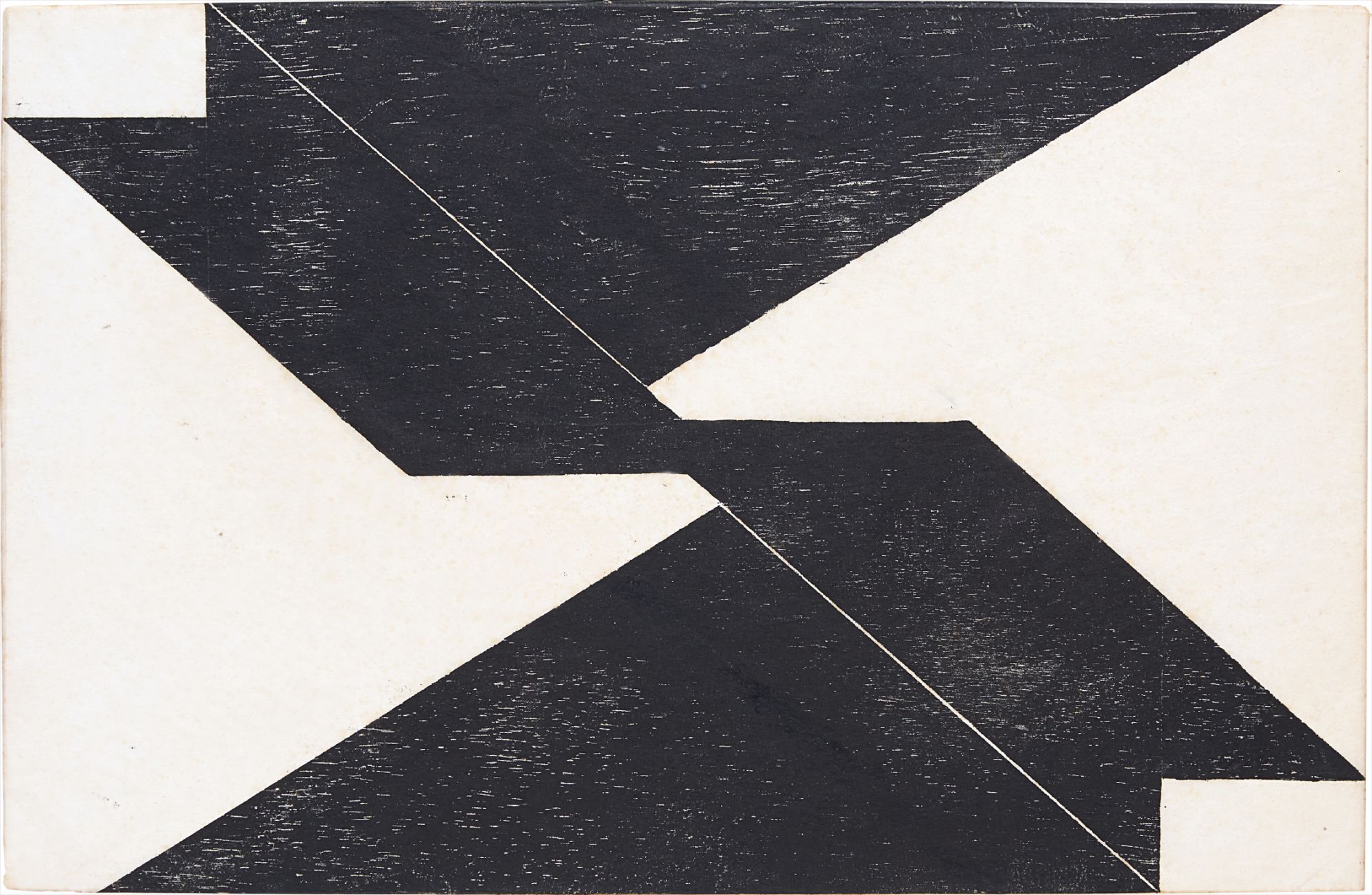The present lot is an important and early example of Lygia Pape’s oeuvre, and one that helped establish her as a key figure of the Neoconcrete movement in Brazil during the late 1950s and early 1960s. As in other Tecelares, meaning weavings, this work demonstrates the way in which Pape took full advantage of the texture and characteristic grains of different types of wood in order to introduce a wide spectrum of black, while still weaving white through the pores on the surface of the engravings. In order to do so, Pape used lower quality woods that were grainier and full of pores to open rays of light or white color, and in this way, transformed these engravings into fascinating lacelike tecelares. These white lines go on to form virtual planes that produce a sense of depth, one that depicts the elements of space. The geometric figures and patterns apparent in this work also represent a constant and recurring theme in these tecelares, which, as she aptly described, are “the most distant to any allusion to the exterior work, and much more expressive on their own” (Editoriales Museo Nacional Centro de Arte Reina Sofia, 2011, p.86).Furthermore, it is intriguing to see the contrast between control and freedom evinced by these works. While all of the choices Pape made in creating these mesmerizing pieces were tightly controlled—from the selection and quality of the material to the meticulous decisions behind the final impression—the relationship between natural wood, ink, and paper also reveal a sense of freedom. It is a freedom partially explained by the fact that her work often contested the art historical canons of the time by transcending planes and the dissemination of light and space; an aspect that is also unique to her artistry and distinguished her from other Neoconcrete contemporaries.

